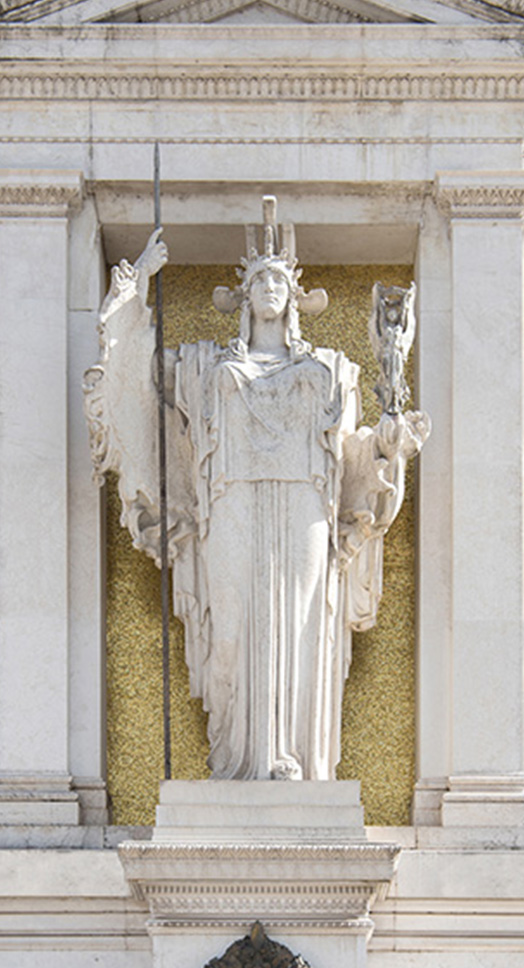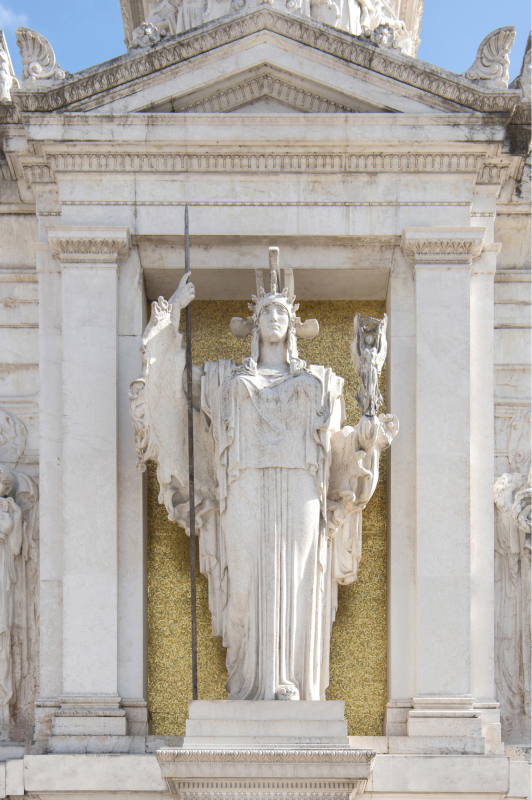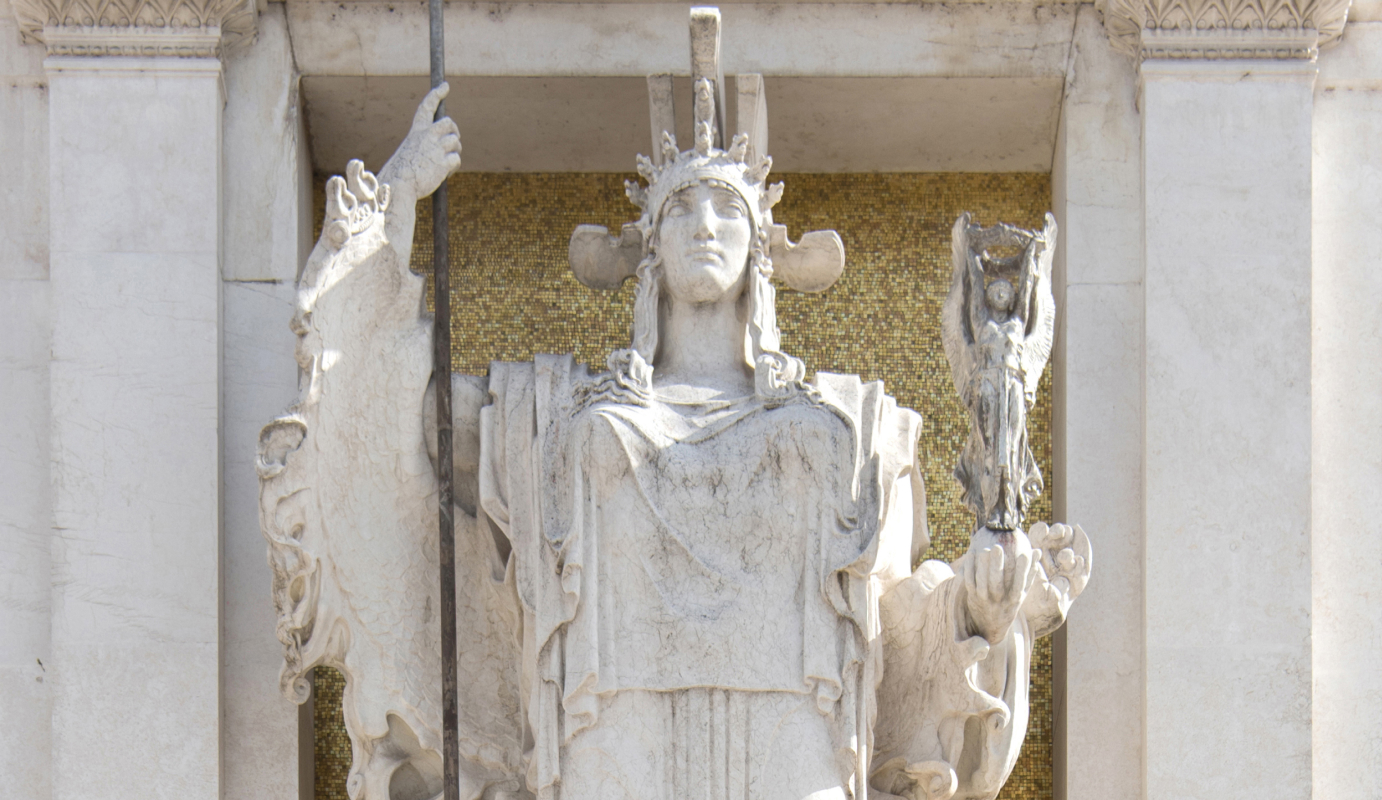An extraordinary female figure, inspired by Athena, the Greek goddess of wisdom, dominates the centre of the Altar of the Fatherland

The sculpture depicting the Goddess Rome is located at the centre of the Altar of the Fatherland, a large votive altar dedicated to the Italian nation, designed by architect Giuseppe Sacconi and decorated between 1911 and 1925 by artist Giuseppe Zanelli from Brescia. Inside an aedicule with a gold mosaic background, the goddess stands proud wearing a Roman peplos and goat’s skin, a helmet and a crown with wolf heads, a spear in her right hand and the statuette of a winged Victory in her left. The iconography derives from the contamination between the depictions of Pallas Athena, the Greek goddess of wisdom, and some elements that refer to the Roman world: the peplos, the statuette of Victory and the crown of wolf heads
Zanelli combines the deep classical inspiration with the culture of the Vienna Secession and of Gustav Klimt in particular: the sculptor showcases, in fact, an accentuated linearism in the drapery and a taste for polychromy, achieved thanks to the gold insert of the background of the aedicule and to the silver of the rod and the statuette.

Inside an aedicule with a gold mosaic background, the goddess stands proud wearing a Roman peplos and goat’s skin, a helmet and a crown with wolf heads, a spear in her right hand and the statuette of a winged Victory in her left. The iconography derives from the contamination between the depictions of Pallas Athena, the Greek goddess of wisdom, and some elements that refer to the Roman world: the peplos, the statuette of Victory and the crown of wolf heads

Zanelli combines the deep classical inspiration with the culture of the Vienna Secession and of Gustav Klimt in particular: the sculptor showcases, in fact, an accentuated linearism in the drapery and a taste for polychromy, achieved thanks to the gold insert of the background of the aedicule and to the silver of the rod and the statuette.